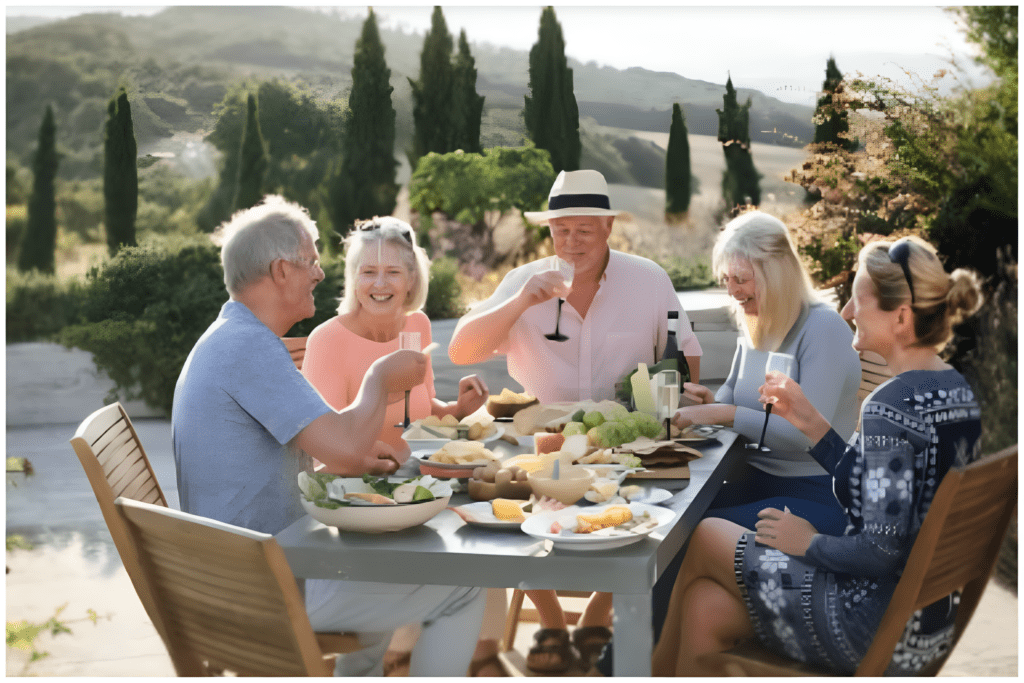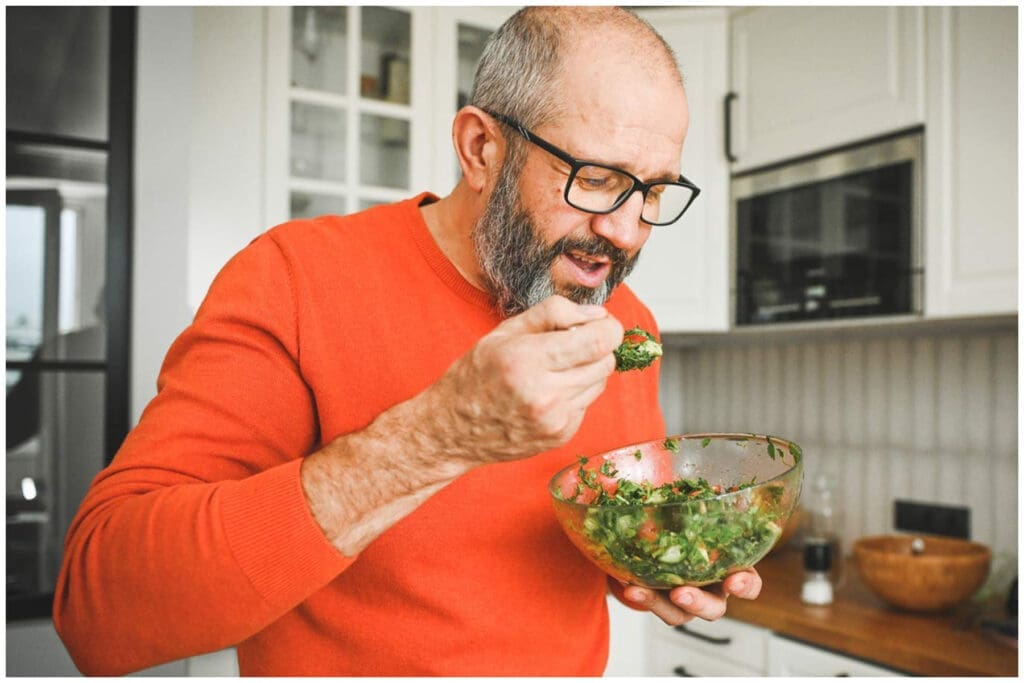What’s the secret to longevity in these blue zones?

Blue Zone is a nonscientific word coined by Dan Buettner, an author who was studying areas of the world where people live exceptionally longer. It refers to the geographic regions that are home to the world’s oldest people.
As chronic diseases are becoming more common as we grow older, it is our lifestyle that plays a great impact. In this article, we will explore the common lifestyle features of the Blue Zones and why they are able to live longer.
The Five Known “Blue Zones”
They are called Blue Zones because when Buettner and his colleagues were searching these areas on the map, they drew blue circles on the map. In his book, Buettner described the Blue Zones:
- Icaria (Greece): Icaria is an island in Greece where people eat a Mediterranean diet rich in olive oil, red wine, and homegrown vegetables.
- Ogliastra, Sardinia (Italy): The Ogliastra region of Sardinia is home to some of the oldest men in the world. They live in mountainous regions where they typically farm and drink lots of red wine.
- Okinawa (Japan): Home to the world’s oldest women, who eat a variety of soy sauce based foods and practice tai chi, a meditative form of exercise.
- Nicoya Peninsula (Costa Rica): The diet is composed of beans and corn tortillas. The people of this area regularly perform physical jobs at their old age and have a sense of purpose known as plan de vida.
- The Seventh-day Adventists in Loma, Linda, California (USA): The Seventh-day Adventist are a very religious group of people. They are vegetarians and live in tight-knit communities.
Buettner may only discuss these places, but they are maybe unidentified areas in the world that can be considered as blue zones. Studies have found that these places contain high rates of nonagenarians and centenarians, who live up to 90 and 100 respectively.
Genetics can only account to 20% or 30% of longevity. Our environmental influences, including diet and lifestyle play a huge impact in determining our lifespan. Below are some diet and lifestyle factors that are common to people who live in these Blue Zones.
Diet and Lifestyle Factors

People who are living in the Blue Zones have one thing in common, they primarily eat a 95% plant-based diet and although they aren’t strict vegetarians, they only tend to eat meat around five times a month.
A myriad of studies have shown that avoiding processed meat and red meat can significantly reduce the risk of death from heart disease, cancer, and a number of causes. Instead, their diets are typically rich in the following:
- Vegetables: A great source of fiber and many different vitamins and minerals. Eating more than five servings of fruits and vegetables a day can significantly reduce your risk of heart disease, cancer, and death.
- Legumes: Legumes include beans, lentils, peas, and chickpeas, which are rich in fiber and protein. A number of studies have shown that eating legumes is associated with lower mortality.
- Whole grains: Rich in fiber and a high intake of whole grains can reduce blood pressure and is associated with reduced colorectal cancer and death from heart disease.
- Nuts: Nuts are a great source of protein, fiber, and polyunsaturated and monounsaturated fats. Complete with a healthy diet, they’re associated with reduced mortality and help reverse metabolic syndromes.
They are also some other dietary factors that define each of the blue zones. People in Icaria and Sardinia often eat fish, which is rich in omega-3 fats and important for heart and brain health.
80% Rule

Long-term calorie restrictions can also help with longevity. Eating fewer calories may be contributing to the longer lives in some of the Blue Zones. Before the 1960s, Okinawans were on a calorie deficit, meaning they ate less calories than they required. This eating habit contributed to living a long and healthy life.
Okinawans tend to follow the 80% rule, which they call “hara hachi bu” which means that they stop eating when they are 80% full, rather than 100%. This prevents them from overeating and increases feelings of fullness, compared to eating rapidly.
This is because hormones that make you feel full only reach their maximum blood levels twenty minutes after eating. Therefore, by eating slowly, you may feel full longer. They also eat the smallest meal in the afternoon and evening, not eating for the rest of the day.
Alcohol Consume in Moderation

Alcohol is consumed moderately. There’s mixed evidence on whether drinking alcohol in moderation reduces the risk of death. The beneficial effect of moderate alcohol consumption is depending on the type of alcohol. Red wine may be the best type of alcohol, given that there are many antioxidants in grapes. It’s very common in Icaria and Sardinia to consume two glasses of red wine per day.
Antioxidants help prevent damage to DNA that can contribute to aging. Therefore, antioxidants are very important when it comes to longevity. Wine drinkers have a healthier lifestyle, with lower blood cholesterol and sleep quality.
Exercise Regularly

Exercise is another factor when it comes to aging. It doesn’t necessarily mean going to the gym, instead it is built in their lives. Gardening, walking, cooking, and other daily chores. A study on men from Sardinia found that their longer lives were associated with raising animals, living on steeper slopes, and walking longer distances.
Exercise can reduce the risk of cancer, heart disease, and death. A large study including over 600,000 people found that those doing exercise had a 20% lower mortality rate than those who did no physical activity.
Good Sleep

Adequate rest and a goodnight sleep also seem to be very important for living a long and healthy life. A number of studies have found that not getting enough sleep or too much sleep can significantly increase the risk of death, including from heart disease or stroke.
Seven hours is the optimal duration. Sleeping is a lot less or a lot more than that was associated with the increased risk of death. In the blue zones, people tend to not go to work at a set time. They sleep as much as their bodies tell them too.
It’s very common to have siesta time, it can reduce the risk of heart diseases and death may even reduce these risks. The length of the nap is also important. You can nap for thirty minutes or less. More than can increase risk of heart disease and death.
What Else?
Apart from a healthy lifestyle, they also have good social support, family, and being spiritual. By incorporating these lifestyle factors into your life, it may be a chance for you to live a full and happy life.

